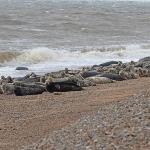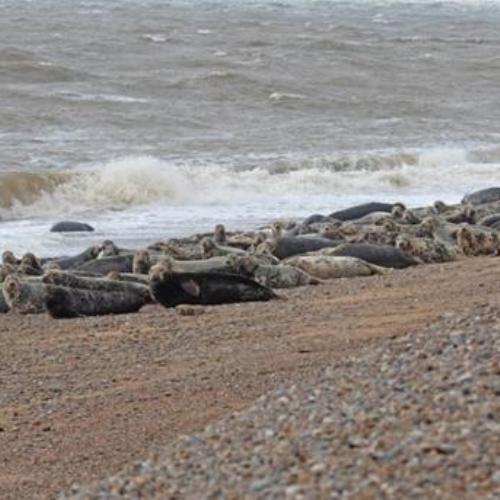Grey seals at Orford Ness Nature Reserve
National Trust rangers at Orford Ness National Nature Reserve in Suffolk are celebrating the birth of over 130 grey seal pups this winter.
It is the third consecutive year of successful breeding at the coastal site.
Although grey seals can often be spotted in the waters around Suffolk, it is believed that this is to be the county’s first breeding colony.
The first 200 adult seals arrived in 2021 during the pandemic when visitor access was reduced. Numbers have increased each year since.
There are estimated to be around 450,000 grey seals globally. With approximately 120,000 around British and Irish waters.
Rangers carry out weekly seal counts and have averaged over 250 adults, with some counts toalling over 500 adults.
About grey seals:
In the wild, female grey seals, known as cows, can live for around 35 years, whilst males live for about 25 years. Cows have their first pups between the ages of three and five and usually return to the same place each year to give birth. The breeding season for grey seals runs from October to March.
Disturbance is one of the biggest threats to grey seals on UK shores and this includes any human activity that can cause them to change their natural behaviour. Which is why Orford Ness is closed to visitorsduring this time. As a result any disturbance has been kept to a minimum.
It is thought the colony has established itself at Orford Ness is the remote nature of the site and along with numbers coming over from established grey seal colonies at Blakeney Point and Horsey Gap. Which are also managed by National Trust.
National Trust understand that people will want to see the colony, but it is important to limit disturbance, to give the pups the best chance of survival. They are looking at the possibility of organising some form of guided access next winter. This will enable visitors to see the grey seals, but also let the rangers keep visitors at a safe distance and with controlled times of possible disturbance.
The most important thing is that visitors keep away during the breeding season and refrain from using boats, drones or other aerial equipment that could disturb the colony.
The National Trust team is working with a number of partner organisations to help support the colony, including the Sea Mammal Research Unit (SMRU) at St Andrew’s as well as British Divers Marine Life Rescue (BDMLR) and the specialist RSPCA rescue centre at East Winch in Norfolk.
Orford Ness is a former 20th Century military testing site which has been left to nature. Its abundance of wildlife includes several species of nesting and wading birds, hares, Chinese Water Deer and precious vegetated shingle.
Orford Ness National Nature Reserve is open on select days from 29 March to 27 October.



